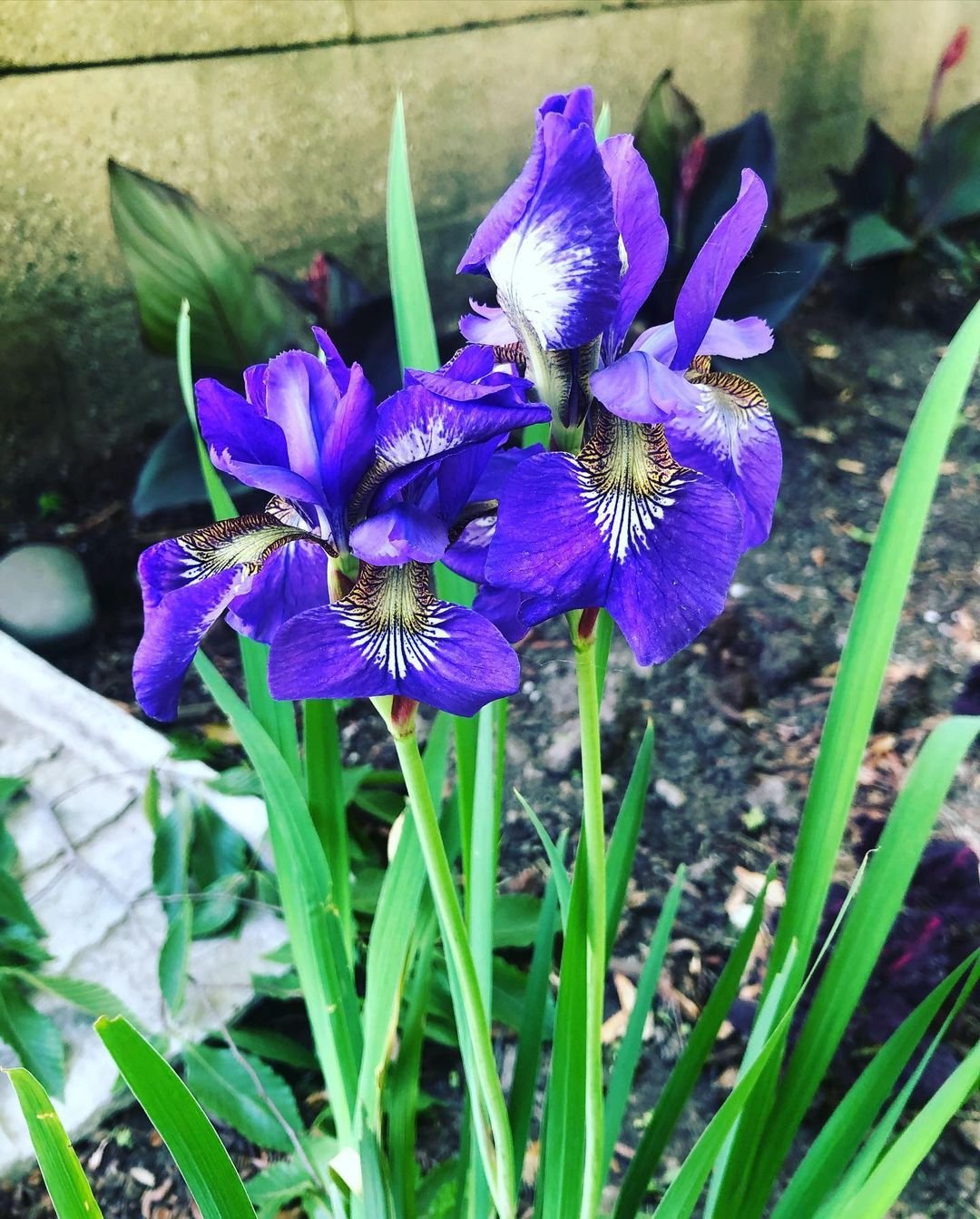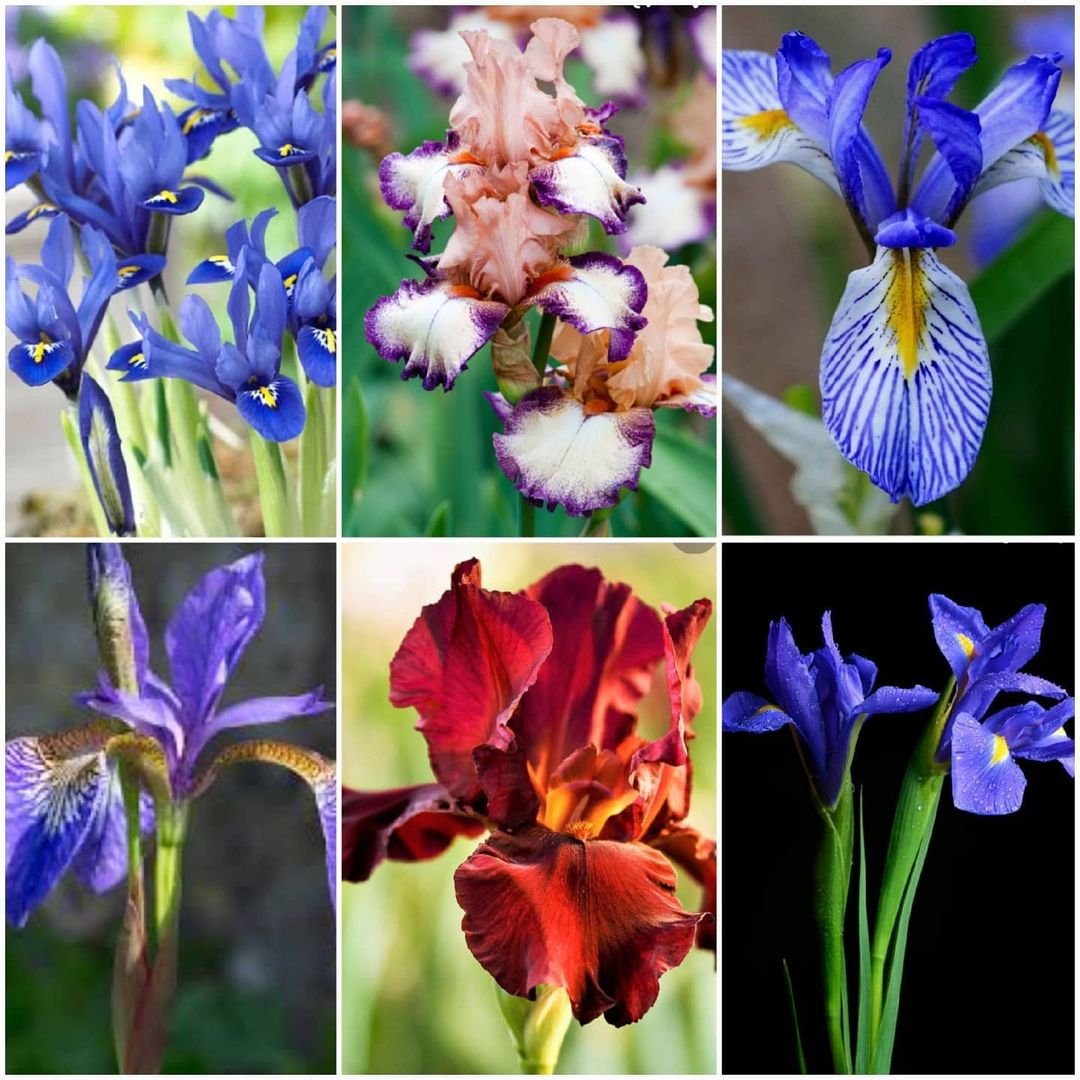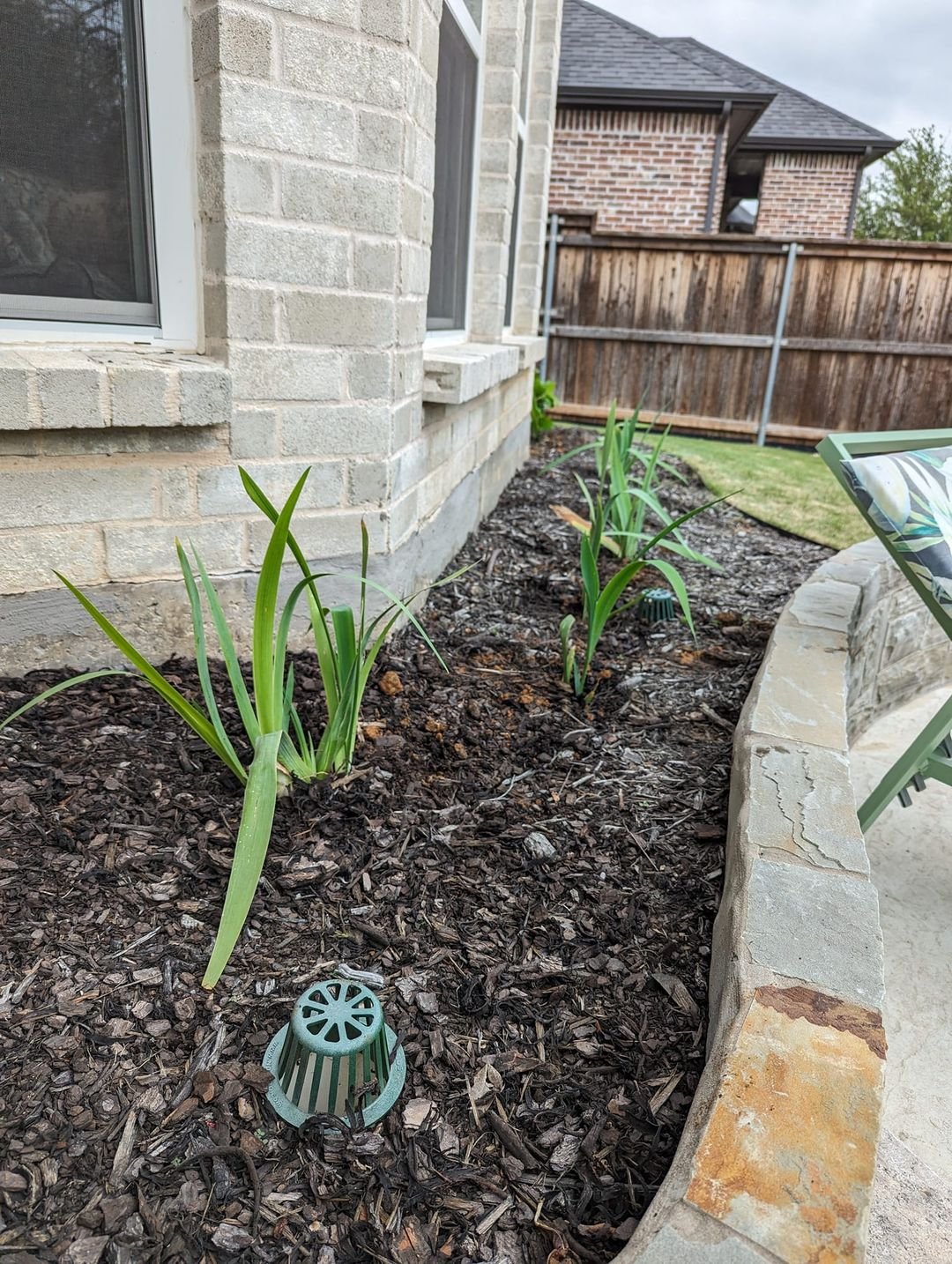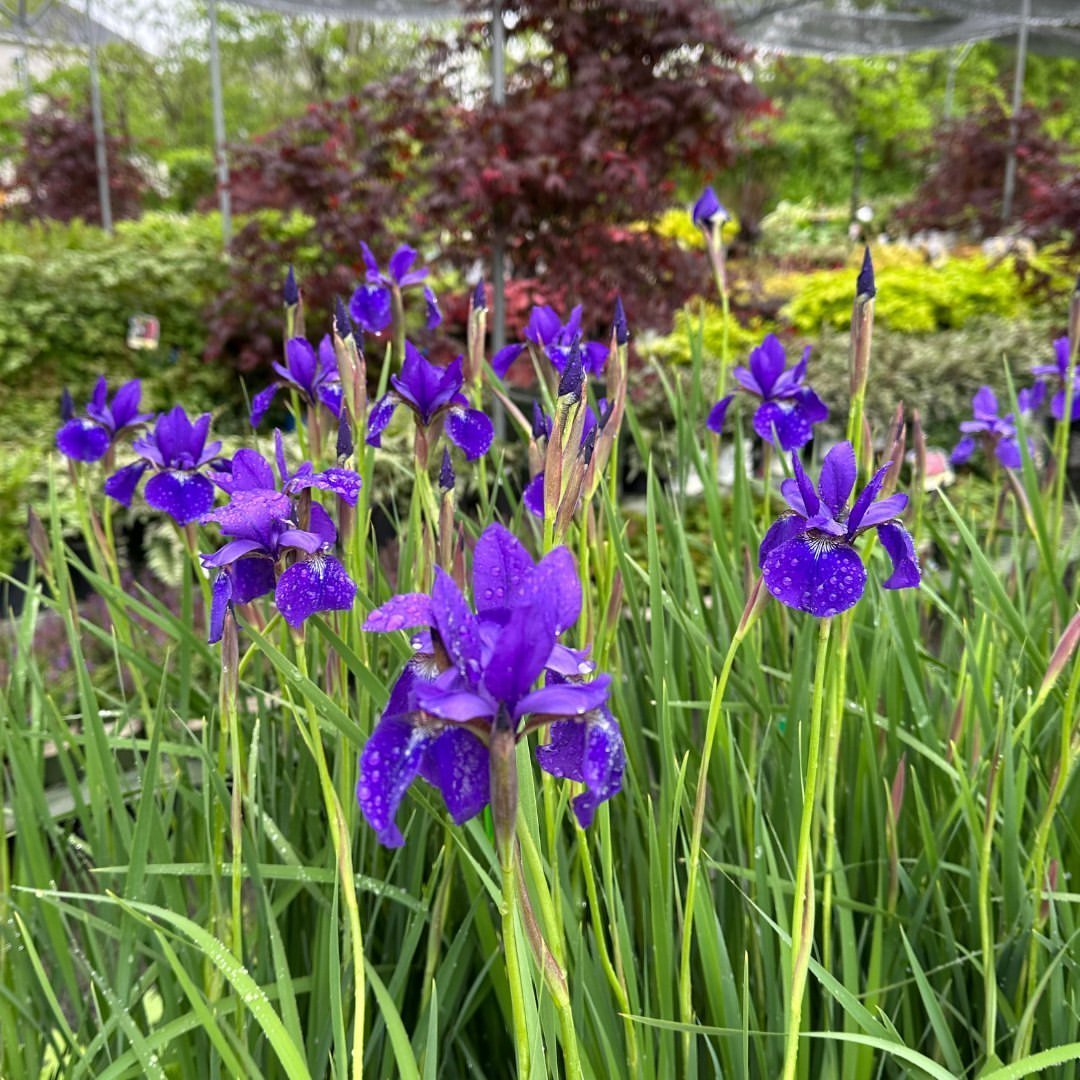Discover expert tips for cultivating Iris Flowers to achieve stunning blooms in your garden. Learn essential advice on planting, watering, fertilizing and seasonal care to ensure your Iris plants thrive and produce beautiful flowers.
With their elegantly ruffled petals and rich color palette, it’s no wonder iris flowers have reigned for centuries as one of the most beloved garden aristocrats. When properly grown, these spring and summer-blooming perennials reward with an eye-catching floral display few other plants can match.
From the showy tall bearded irises to petite dwarf varieties and exotic hybrids, there’s an iris cultivar suited to virtually any landscape setting And with the right cultural conditions and care, these glamorous reinettes will unfurl their gorgeous blooms year after year, delighting admirers near and far.
If you’ve been wanting to grow iris plants but weren’t sure where to begin, this comprehensive guide covers all you need to know for cultivating success. Let’s dig in!
Here’s a short information chart about Iris plants:
| Feature | Description |
|---|---|
| Scientific Name | Iris spp. (various species within the genus Iris) |
| Family | Iridaceae |
| Common Colors | Blue, purple, yellow, white, pink, orange |
| Leaf Type | Sword-shaped, long and slender |
| Flower Structure | Three large outer petals (falls) and three inner upright petals (standards) |
| Habitat | Found in temperate regions across the globe, including meadows, woodlands, and gardens |
| Blooming Season | Spring and early summer |
| Uses | Ornamental purposes in gardens and landscaping, cut flowers |
| Special Characteristics | Rhizomatous or bulbous root systems, some species have fragrant flowers |
What Are Iris Plants?

Irises are rhizomatous perennial plants comprising over 300 species and thousands of hybrids and cultivars in the genus Iris. They’re prized among gardeners for their showy, intricate flowers featuring three upright inner “standard” petals and three arched outer “fall” petals.
The large, flat iris blossoms appear in late spring to early summer, unfurling in nearly every color of the rainbow except true red. Each elegant bloom lasts only a few days but new flowers continually open on towering leafless stems for several weeks.
Most iris varieties feature slender, sword-shaped or fan-like foliage that remains attractive even after blooming finishes. This upright foliage emerges from thick, underground branching stems called rhizomes that store the plant’s energy reserves.
Popular Types of Irises

With such immense diversity in the iris family, navigation can seem daunting for new gardeners. Here are some of the most popular and easy-to-grow iris types:
- Tall Bearded Irises: Getting their name from the fuzzy “beards” on their fall petals, these classic irises grow 2-3 ft tall with large blooms up to 8 inches wide in spring.
- Siberian Irises: These rugged irises thrive in wide temperature extremes, featuring slender stems and blue, violet or white blooms in late spring.
- Louisiana Irises: Native to the Gulf Coast, these boggy irises grow from rhizomes in semi-aquatic conditions and bloom in late spring.
- Dwarf Bearded Irises: Appropriately named for their compact size, these little 6-8 inch marvels adorn early spring with jewel-toned flowers.
- Dutch Irises: Prized for forced indoor blooms, Dutch irises also make lovely outdoor cuts and borders with colorful late spring displays.
With hundreds of iris cultivars available in nearly every color imaginable, gardeners can handpick selections to fit any garden design aesthetic or color scheme. A rainbow of iris plants is always a sight to behold!
Growing Irises in the Garden

While some irises like the Japanese and Louisiana types prefer moisture, most garden iris cultivars thrive in full sun and well-draining soil. Follow these planting tips:
When to Plant
In cold climates, plant rhizomes in late summer around 6-8 weeks before first fall frost. In warm climates, early fall planting works.
Choosing Rhizomes
Purchase top-quality, firm, disease-free rhizomes from a reputable iris grower when planting in fall. Freshly dug rhizomes establish best.
Site Selection
Pick a spot that receives at least 6 hours of sunlight daily and has loose, fertile, well-draining soil enriched with compost or manure.
Planting Depth
In the planting hole, create a ridge of soil down the center. Set rhizomes on the ridge horizontally with roots facing outward and buds facing up. Cover rhizomes completely but leave the top surface exposed.
Spacing
Space rhizomes 10-24 inches apart to allow for good air circulation and prevent overcrowding.
Watering Needs
Provide infrequent, deep irrigation that allows soil to dry slightly between watering. This helps promote strong root growth and bloom production.
With the right planting location and techniques, you’ll have vibrantly colored iris flowers blooming in their first season. Then it’s simply a matter of keeping up with some basic care.
How to Care for Iris Plants

Iris plants may be a bit moody, but maintaining some simple cultural practices should keep them performing optimally for many seasons:
Fertilizing
Apply a low-nitrogen fertilizer or compost annually in early spring when fans emerge. Avoid high-nitrogen fertilizers that promote lush foliage growth over blooms.
Deadheading
Carefully remove spent flower stems down to the base after each flush of blooms. But avoid damaging the foliage that replenishes the rhizome’s energy.
Dividing & Transplanting
Lift and divide overcrowded rhizomes every 3-4 years in late summer after bloom finishes, when rhizomes go dormant. Replant or discard older, woody center rhizomes.
Mulching
Once replanted, apply a 2-3 inch layer of mulch over rhizomes to keep soil cool, prevent weeds and maintain even moisture levels. Leave rhizomes exposed on top.
Pest Management
Check iris plants periodically for iris borers, bacterial soft rot or leaf spot diseases. Treat with organic or chemical pest controls if issues arise.
Preparing For Winter
In cold regions, cut foliage back to a few inches after killing frosts. Apply fresh mulch over rhizomes and crowns to insulate for winter.
Staking
Some varieties of robust tall bearded iris may require staking for support if stems become floppy. Use a simple bamboo stake or decorative iris support.
By adapting your care routine to each iris’ specific cultural preferences, you can ensure complete health and lavish blooms for seasons to come.
Creative Ways to Use Iris Plants

With their elegant, eye-catching floral displays, it’s easy to showcase iris plants in many appealing ways around the home garden and landscape:
Dedicated Iris Beds
For maximum impact, plant a riot of different iris cultivars together in a dedicated perennial border, raised bed or large container. Layer early, mid and late bloomers for continuous spring display.
Cutting Flowers
Iris stems make stunning fresh cut flowers with nice vase life. Harvest in bud stage or leave the last bloom or two to open indoors. Some varieties like Dutch iris are grown specifically for cutting.
Mass Naturalized Drifts
Let reblooming irises like Siberians self-sow and spread into large, naturalized meadow plantings for seasons of carefree color.
Interplanted with Groundcovers
Stagger iris rhizomes between low-growing perennial groundcovers for an effortless, layered look with flowering interest.
Companion Plantings
Mix iris heights, colors and bloom times with complementary perennials like peonies and daylilies for a lush, cohesive spring border display.
Formal Gardens
With their upright, strappy foliage and showy blooms, stately iris rows suit formal planting beds or can be used to outline paths and frame landscapes.
Potted Displays
Dwarf and miniature iris varieties are ideal for creating colorful potted accents for patios, porches or indoor decoration when forced into bloom.
With their vast diversity in sizes, forms and colors, it’s easy to work irises into virtually any garden design in so many creative ways. From low-maintenance perennial borders to showstopping dedicated beds, these majestic flowers never fail to make a bold statement.
However you choose to showcase them, providing the proper planting conditions and cultural care will pay big dividends in making your iris blooms as vigorous and resplendent as possible. So invest the time to find varieties suited to your climate, amend soil as needed and keep up with periodic fertilizing, dividing and pest prevention. With a little planning and diligence, you’ll be rewarded with stunning floral displays fit for royalty!
Pingback: Tulip Flowers Care: From Planting to Blooming Guide
Pingback: Cultivating Iris Flowers: Tips for Stunning Blo...
Pingback: Sunflowers: Varieties, Planting Tips and Care Techniques